Hola, travel lovers! Today, I’m taking you on one of my favorite walks through Barcelona’s Gothic Quarter: down Carrer del Bisbe, or Bishop’s Street. It’s one of those places where time seems to bend, where medieval stone walls whisper, footsteps echo on worn cobblestones, and sunlight filters gently through the arches above. At first glance, it looks like something straight out of a medieval tale, a narrow lane crowned by a fairytale bridge connecting two Gothic façades. But look closer, and you’ll discover that this storybook street hides a surprising secret: its most iconic feature, the Pont del Bisbe (Bishop’s Bridge), isn’t as ancient as it seems. And yet, its magic feels timeless.
A Path Through Time
Carrer del Bisbe stretches between Plaça de Sant Jaume and the Barcelona Cathedral, forming a symbolic passage between civic power and spiritual life. It’s a street you don’t just walk through, you feel it. The air cools as you step into its shadow. The sound of voices fades, replaced by the soft rhythm of footsteps and distant bells ringing from the cathedral tower.
This narrow, cobblestoned passage follows an ancient Roman route and retains medieval character, though much of its present appearance is the result of 19th and 20th-century restoration. It was historically used by clergy and dignitaries making their way between the bishop’s palace and the government’s seat. Even though its current appearance is the result of careful restoration, it perfectly captures the spirit of the Gothic Quarter: intimate, reverent, and layered with history.
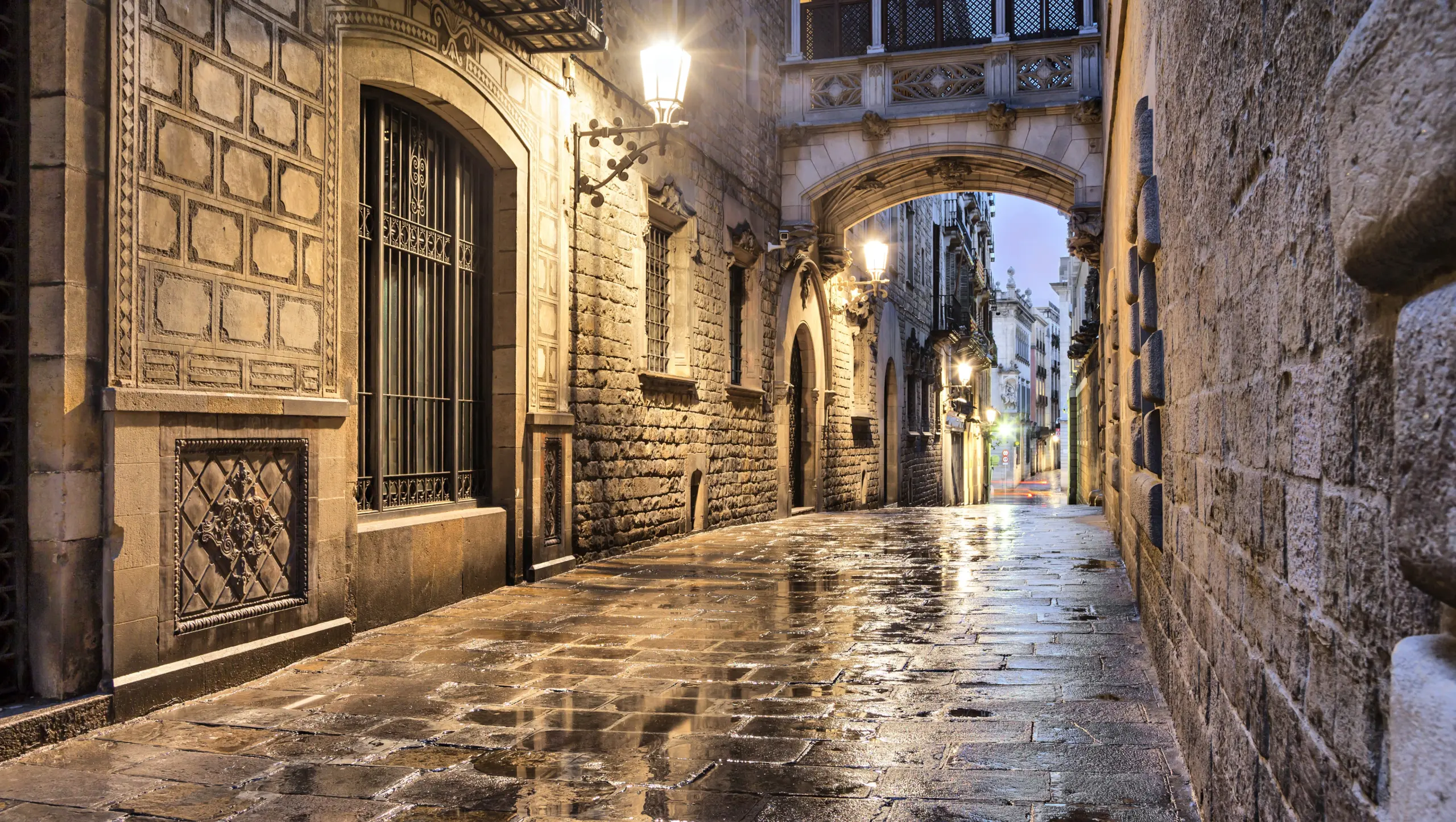
The street’s walls are carved with centuries of stories – coats of arms, sculpted windows, and the soft glow of iron lanterns that seem to belong to another era. It’s one of those rare streets where you can close your eyes and almost hear the city as it once was: slower, quieter, and deeply human.
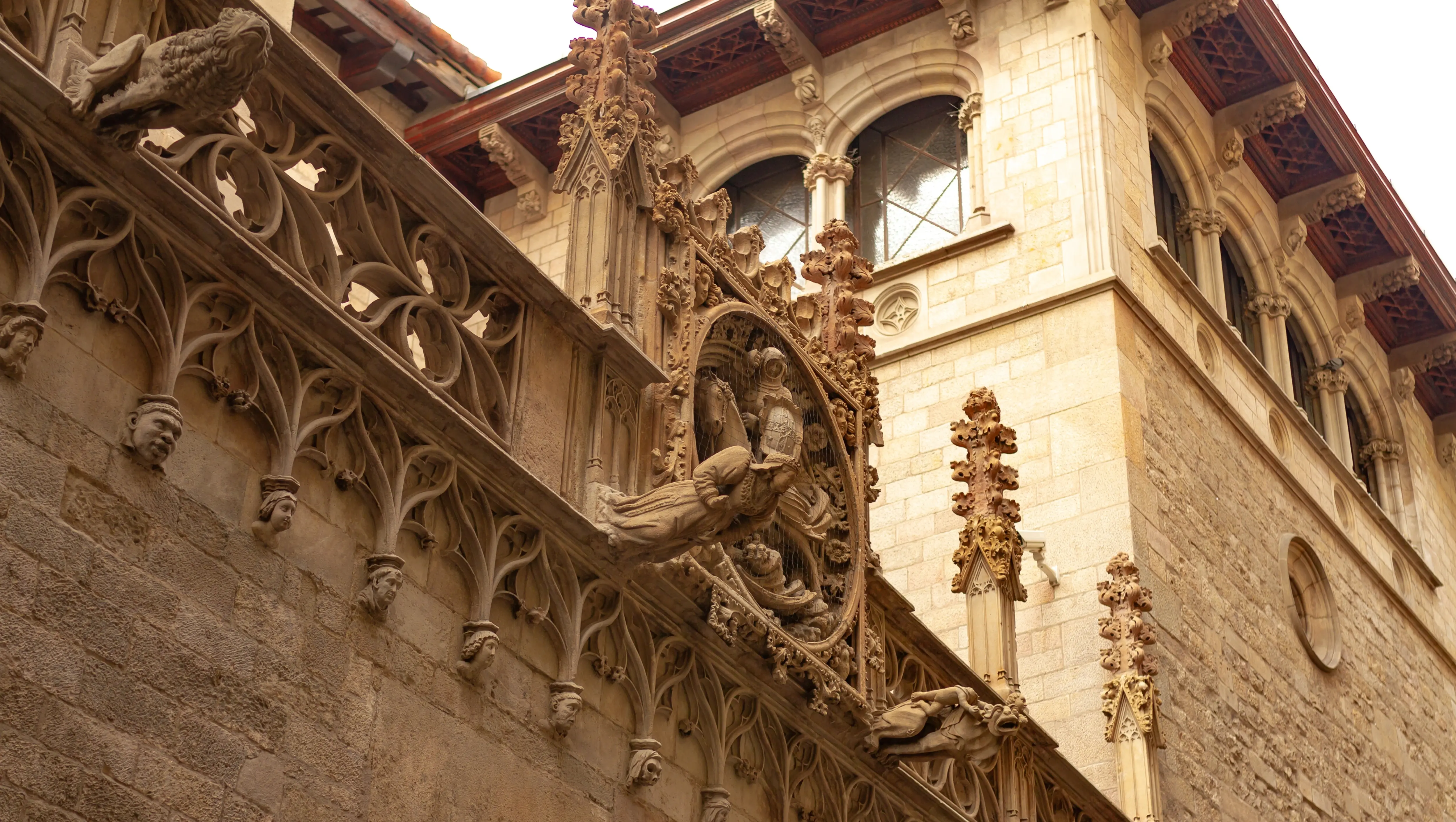
The Pont del Bisbe: A Modern Legend in a Medieval Setting
And then, there it is – the bridge. Graceful, ornate, and impossibly photogenic, the Pont del Bisbe is one of Barcelona‘s most beloved architectural sights. Built in 1928 by Joan Rubió i Bellver, a disciple of Antoni Gaudí, the bridge was part of the city’s early-20th-century Gothic Revival movement, an effort to restore and romanticize the historic heart of the city.
The delicate stone tracery, the pointed arches, and the mysterious skull and dagger carved beneath – all of it evokes the elegance of a forgotten age. Yet it’s less than a century old. The bridge connects the Palau de la Generalitat (the Catalan government building) to the Casa dels Canonges (the residence of the president of the Generalitat), symbolically linking governance and tradition.
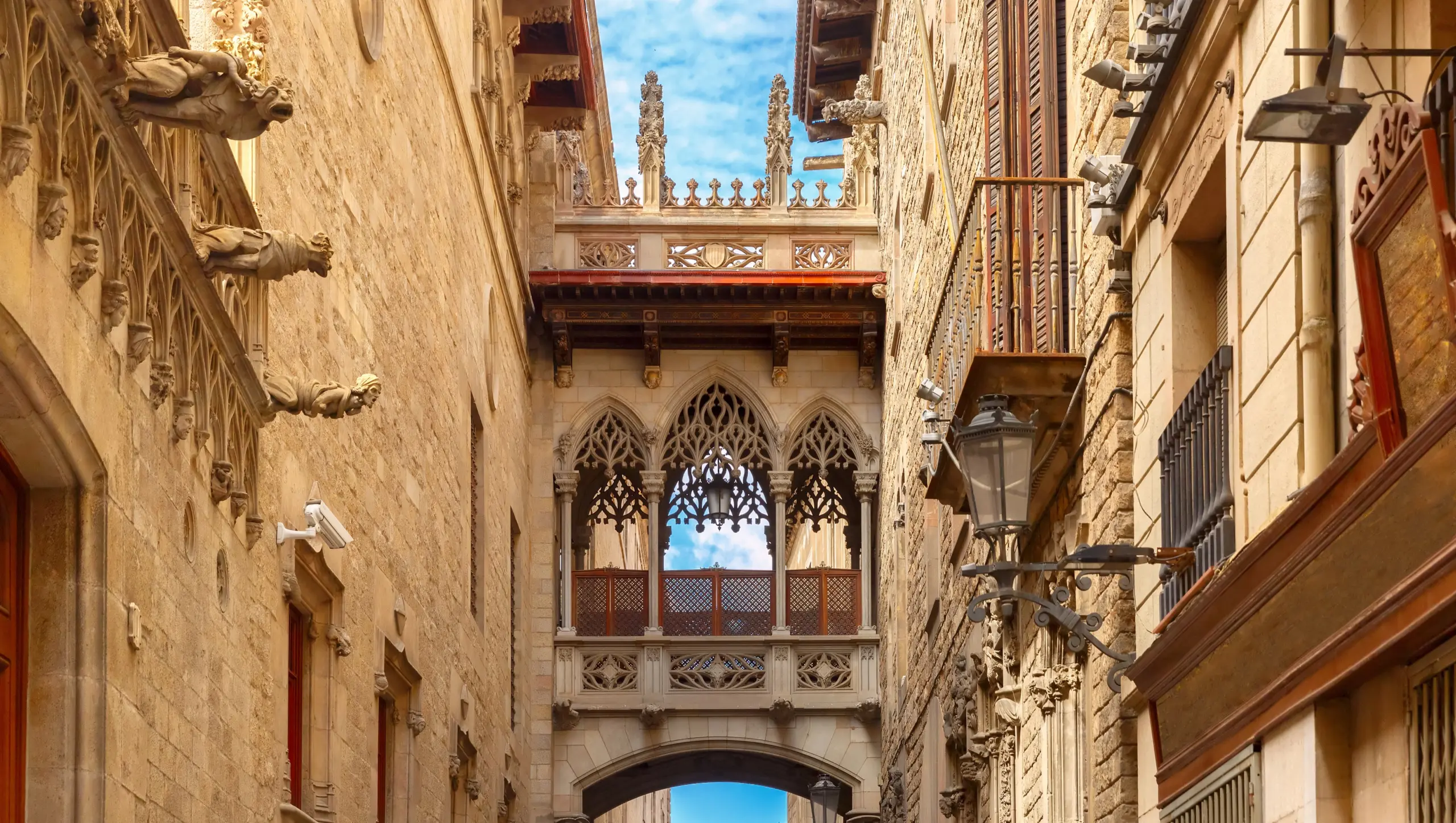
And like all things beautiful in Barcelona, it comes with mystery. Look closely beneath the bridge and you’ll spot a stone skull pierced by a dagger. No one knows its true meaning or why Rubió i Bellver placed it there. Over the years, various legends have emerged: some say that if the dagger were ever removed, Barcelona would face destruction. Others whisper that the souls of the dead parade beneath it, or that it was placed as a curse by the architect himself, perhaps in protest against the city council. A more hopeful legend suggests that if you make a wish while gazing at the skull, it might come true. Whether rooted in fact or pure imagination, the skull has become an inseparable part of the bridge’s mystique, a haunting reminder that even in a city of light and creativity, mystery endures.
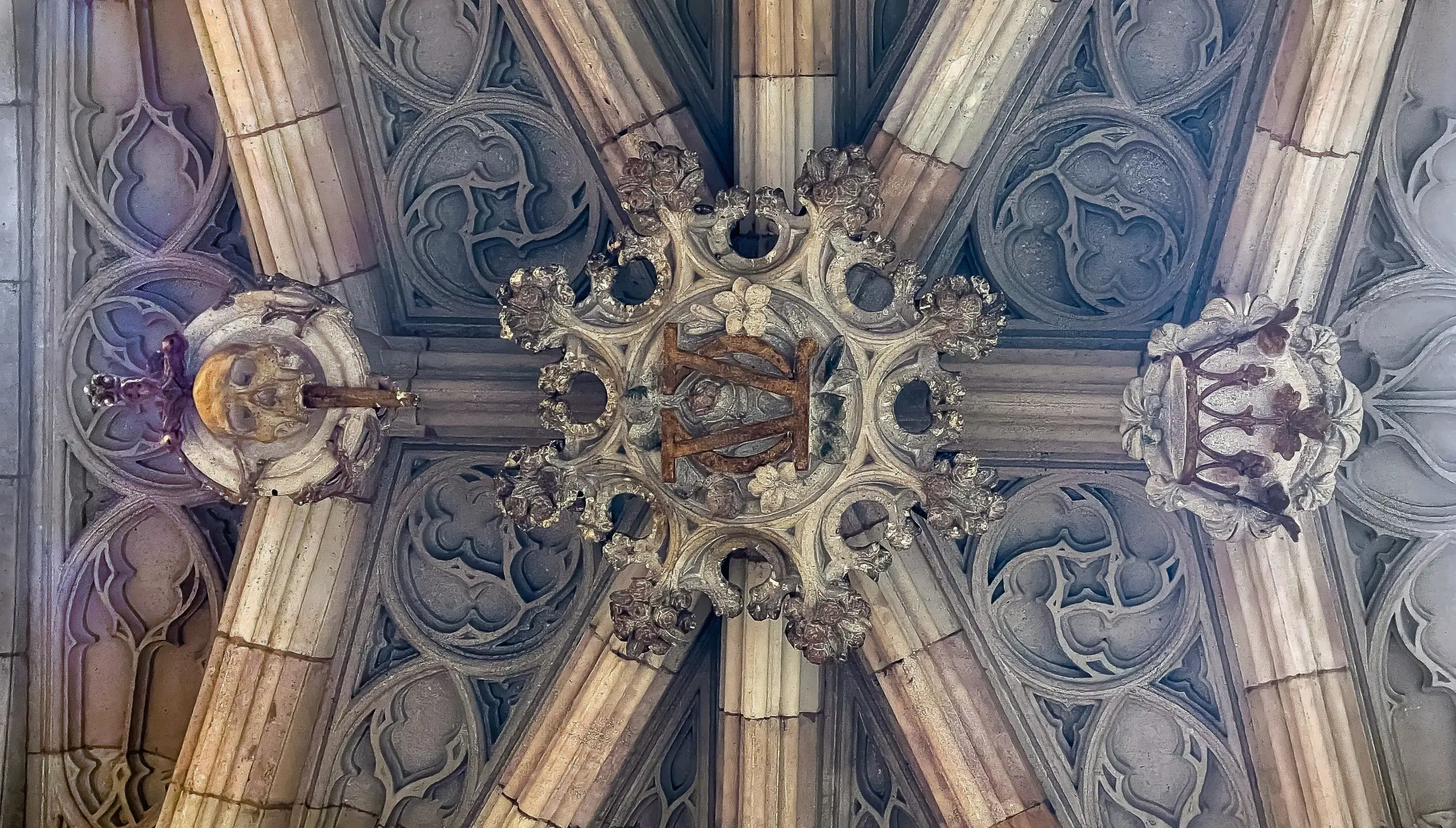
Through My Eyes
When I first walked along Carrer del Bisbe, I remember feeling the temperature drop ever so slightly, the kind of cool that only centuries-old stone can hold. The air smelled faintly of moss and time. A guitarist played softly nearby, his music echoing gently through the narrow passage.
I paused beneath the bridge, looked up at its lace-like arches, and felt utterly transported. For a moment, the world outside the Gothic Quarter disappeared – no cars, no modern noise, just stone, shadow, and sunlight flickering like gold dust between the carved lines. I tilted my head toward the bridge’s underside, half-expecting the skull to catch the light, and couldn’t help smiling. Whether cursed or blessed, this was one of those moments where travel feels like magic: standing in a place where imagination and history intertwine.
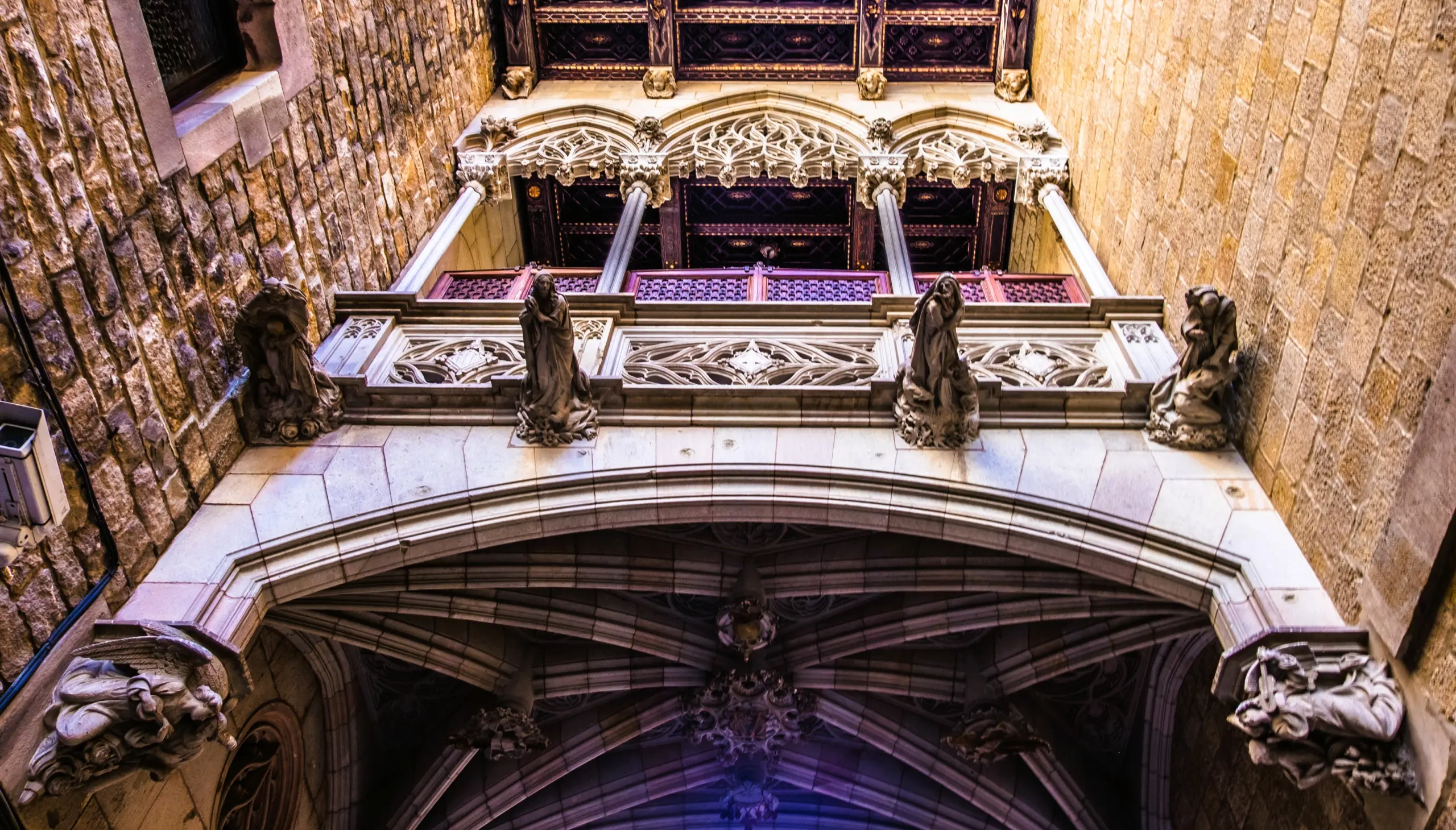
Bubbly Tips
- Where to Find It: Carrer del Bisbe is located in the Gothic Quarter, connecting Plaça de Sant Jaume to the Barcelona Cathedral. You can’t miss the bridge, it arches dramatically above the narrow street, just steps from both landmarks.
- Best Time to Visit: Come early in the morning for peaceful photos and golden light streaming through the bridge. Late evening, when the street lamps flicker on, is equally enchanting.
- Photography Tip: For the perfect shot, stand slightly off-center and angle upward, this composition captures the depth of the alley and the intricate carvings of the bridge. Try framing it with the cathedral’s tower in the distance for context.
- Pair It With: After strolling down Carrer del Bisbe, visit Casa de l’Ardiaca nearby. Its peaceful courtyard and whimsical mailbox are a hidden gem. Or continue toward Plaça del Rei, another Gothic marvel.
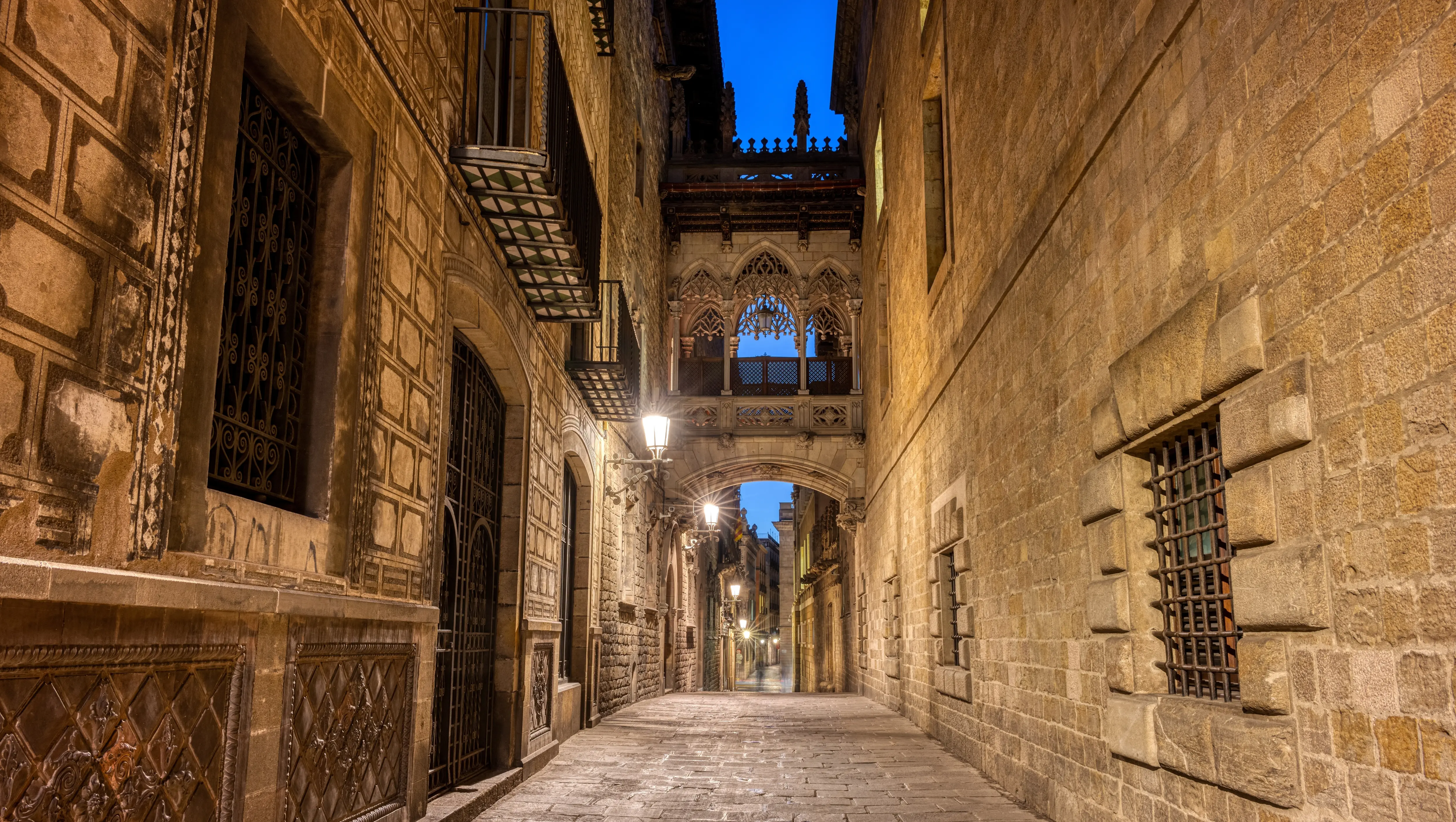
Final Thoughts
Carrer del Bisbe may be small, but it carries an enormous sense of presence. It’s a street that captures what makes Barcelona so special: the way the past and present coexist so naturally, like two sides of the same story.
Whether you come for the architecture, the legend, or simply to lose yourself in its quiet beauty, this is one of those places that invites you to slow down and look up. You’ll find yourself in awe, not just of the bridge above, but of how effortlessly Barcelona continues to blend history, artistry, and life itself.
Have you ever walked beneath the Pont del Bisbe? Did you make a wish or sneak a backward glance at the skull? I’d love to hear your stories below!
xoxo,
Bubbly ✨

